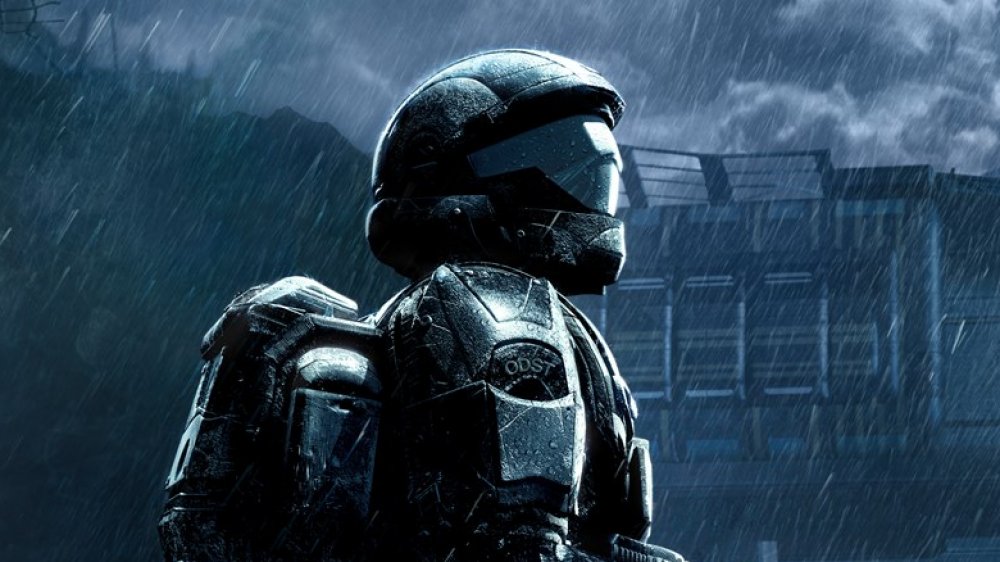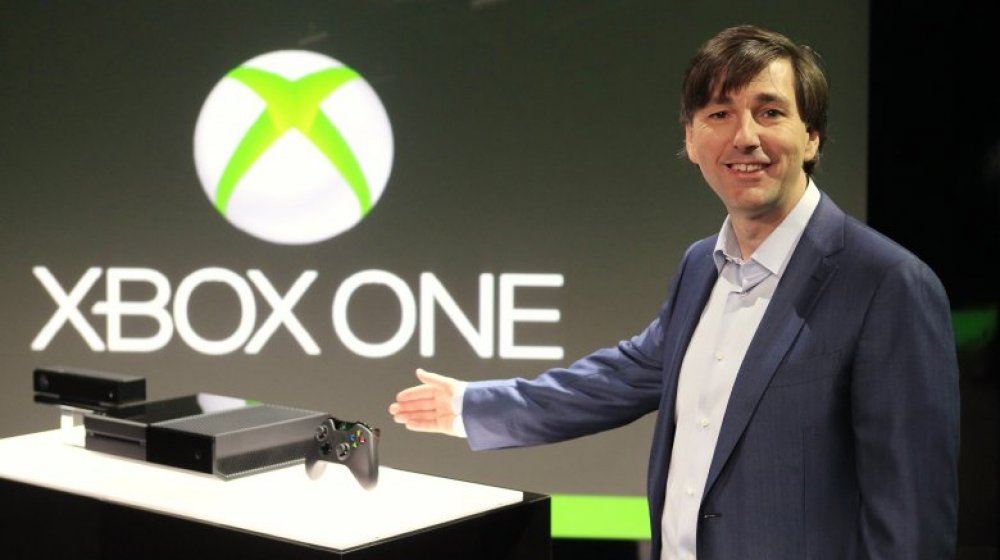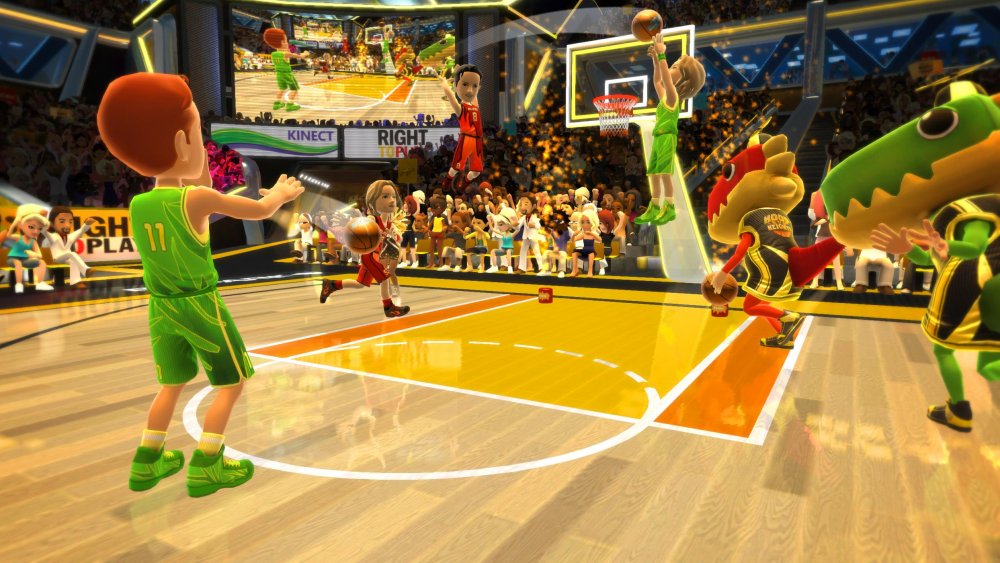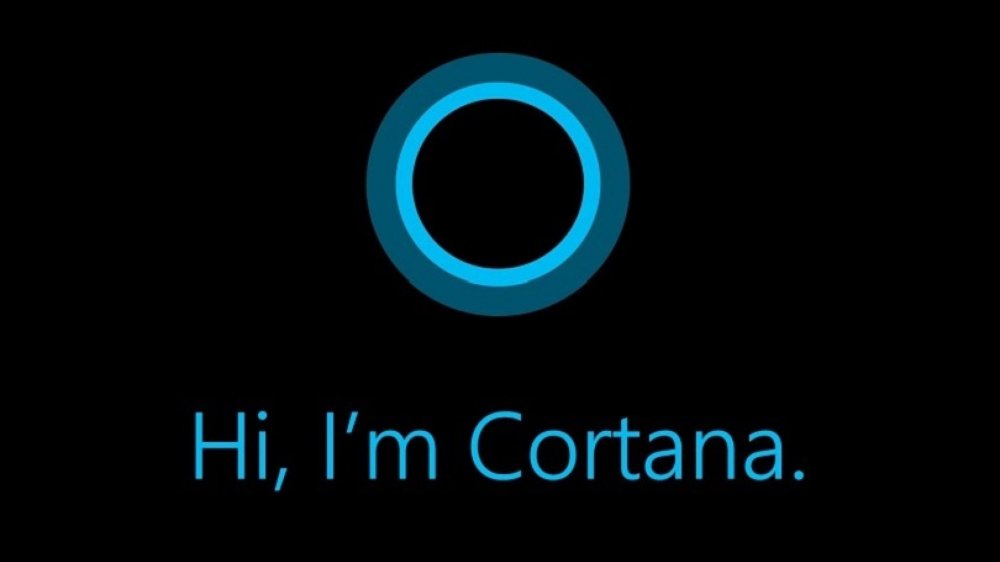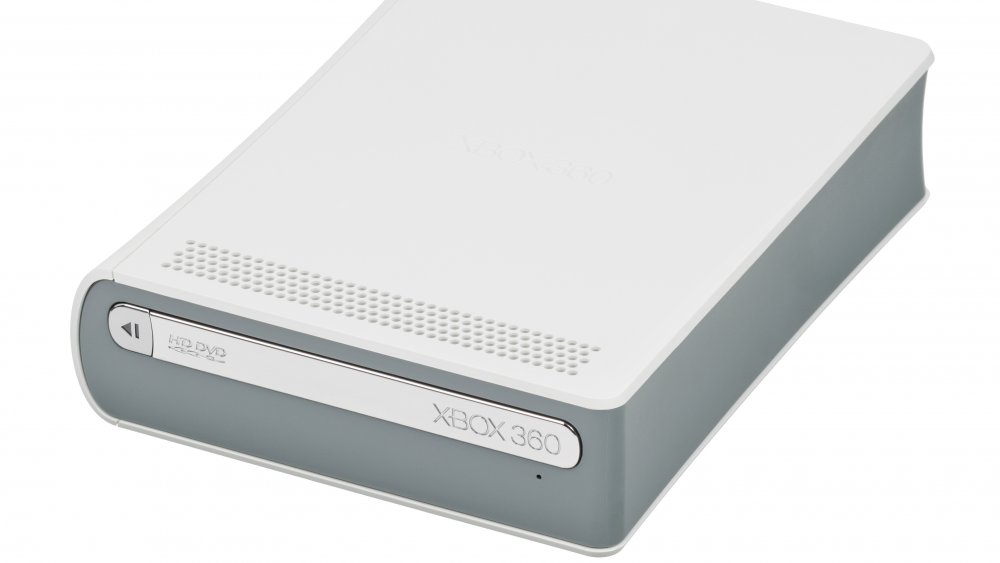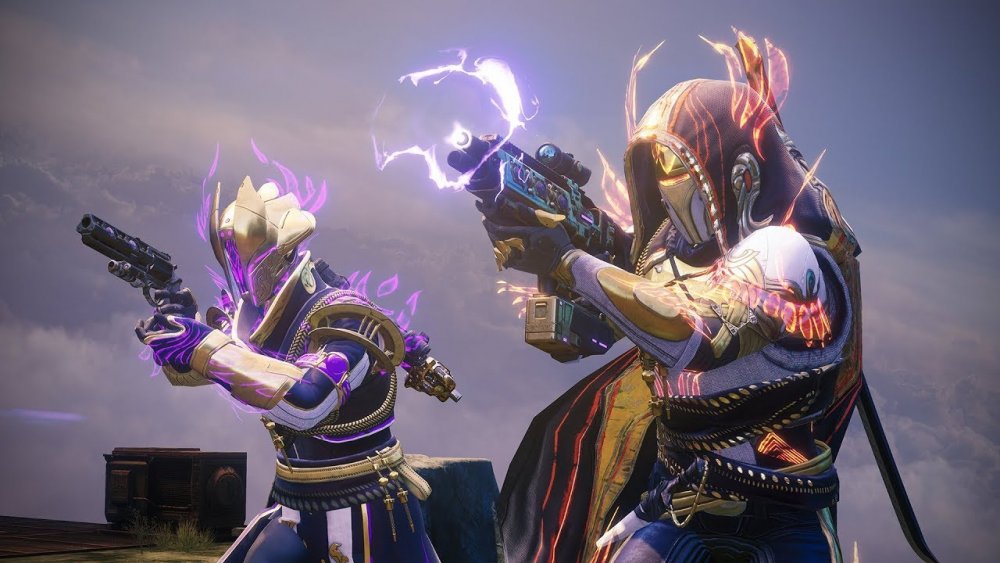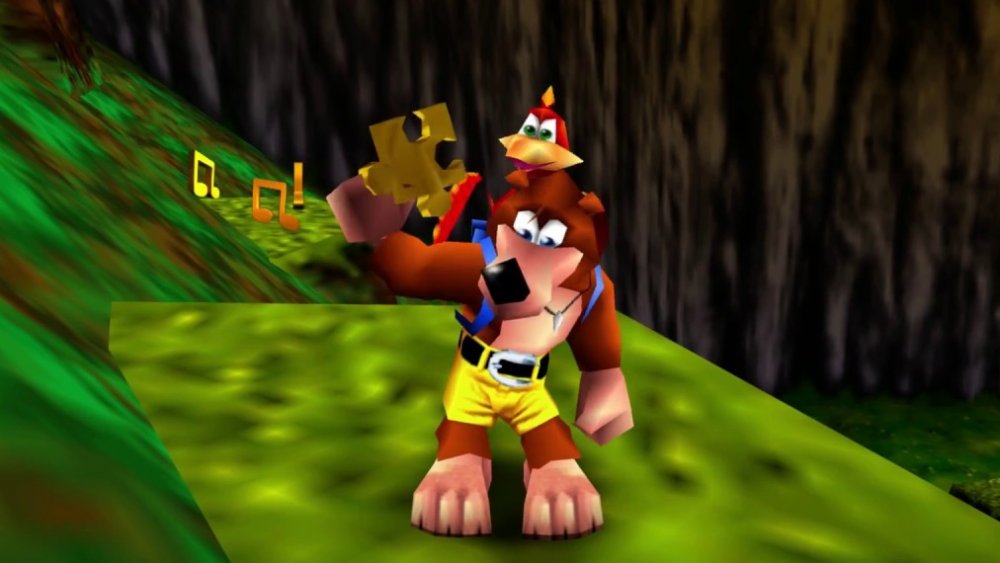Things Microsoft Wants You To Forget About Xbox
When video games first started growing, the console wars were all about two companies: Nintendo and Sega. Since those early years, new competitors have entered and familiar faces have left the dance, but few companies that weren't involved in that early wave have made as big a splash as Microsoft.
Bill Gates unveiled the final design of the original Xbox all the way back in 2001, with a little help from a very young Dwayne "The Rock" Johnson. The system launched for the 2001 holiday season, and several console generations have followed. Despite Microsoft's place as one of the big three in the world of consoles, it hasn't always been smooth sailing for the house that Gates built.
Despite what overeager fans might have you believe, Microsoft has made some serious errors over the past two decades with its Xbox consoles. Take a look at a few of the Xbox missteps Microsoft wishes you'd forget.
The Red Ring of Death
If you've been in the world of video games for any amount of time, you probably haven't forgotten about the dreaded Red Ring of Death. This problem plagued the Xbox 360 and, according to a report from Business Insider, ultimately wound up costing Microsoft over $1 billion.
The massive cost stemmed from the company's decision to extend the 360's warranty, replacing and repairing all affected consoles for years after the original term. This was a savvy but costly PR move that ultimately helped save the console despite the massive production gaffe.
The Red Ring of Death came about because Microsoft designed the look of the Xbox 360 before it engineered the system. Unfortunately, this caused problems with some of the internals — overheating could cause a breakdown, which effectively bricked the system. There were some workarounds, though they were often temporary. A popular move was the "towel trick," which basically overheated your console even more. At the same time, this could (at least temporarily) solve the issue.
The Xbox 360 took some hits for the Red Ring of Death, but Microsoft's smart decision to eat the cost helped mitigate damage to the brand. Still, employees probably don't bring this up in shareholder meetings.
The entire unveiling of the Xbox One
Overall, the Xbox One has been a successful console. It may lack the first party exclusives of its competitors, but you'd be hard pressed to call it a failure. Considering how the console got started, you might consider this outcome a surprising turn of events. The Xbox One had an awful reveal, with a handful of decisions that nearly tanked the system before it even released.
When announced, the Xbox One had some serious privacy issues. The system would feature a combination of "constant connectivity" and mandatory Kinect integration, meaning the camera was always gathering information in case it needed to turn on. These fancy connectivity "perks" also drove up the cost of the system, as the Kinect was an impressive piece of hardware.
In addition to the privacy issues, the Xbox One also has serious problems surrounding used games. Initial reports said that used games were unplayable (this was changed as development moved forward), causing confusion about whether you could even cart a disc of a newly-purchased game to a friend's house to try. The Xbox One eventually righted the ship, but it was certainly a rocky start.
The push for Kinect
Motion controls became all the rage after the Nintendo Wii took the world by storm, and Microsoft bet big that its camera system, the Kinect, would follow suit. GameRant writes that the original Kinect release for the Xbox 360 sold in record amounts, moving over eight million units in just a couple of months. However, the Kinect failed to have any staying power: exactly what happened?
One of Microsoft's major missteps was automatically integrating Kinect with the Xbox One. This significantly increased the price of the system and alienated people who either did not want the camera system or thought the gimmick had run its course. At the time, there was also major backlash regarding privacy concerns, and the idea of bringing an "always on" console into your home with an integrated camera system rang a lot of alarm bells.
The Kinect made Microsoft a lot of money on its initial release, but hitching its horse to it put Microsoft well behind Sony when the Xbox One released.
Cortana as a direct competitor to Alexa and Siri
Much like how the Kinect saw some major success but overstayed its welcome, Microsoft's digital assistant, Cortana, seemed like it could be something special. Cortana made the jump from an algorithm based search assistant to a direct competitor to things like Siri and Alexa, but it wasn't able to find its footing against those giants.
Digital Trends notes that the biggest issue with Cortana was timing. In tech, the originator is often the winner, as users acclimate themselves to it and have difficulty switching to a different, similar product. By the time Cortana hit mainstream markets, other voice assistants had already achieved market saturation and made it near impossible for new products to break in. Cortana's one hope was the Windows Phone, which was unable to make a dent and was discontinued.
As those other voice assistants continue to spread to new products and more homes, Cortana's impact continues to shrink. It's still around, but it seems very unlikely to be mentioned in the same breath as its "competitors."
Backing HD DVD
Content delivery wars have always been fascinating from a mainstream perspective. The 1970s and '80s had VHS vs. Betamax, and the mid-2000s gave the world the next step up: Blu-ray vs HD DVD. Sony's PlayStation 3 was released as a Blu-ray player in addition to being a game console, while the Xbox 360 promised an HD DVD player as an add-on shortly after release. Maybe it's just hindsight, but it seems obvious now that Microsoft made the wrong move here.
Engadget has a great retrospective of the main reasons why Blu-ray ultimately won the battle, but here's the low-down. Nearly every studio (Universal was the lone exception) backed Blu-ray, giving it a massive content advantage over HD DVD. In addition, Sony's decision to market its console as a Blu-ray player proved fruitful: they were sleeker and around the same price point as actual Blu-ray players, helping make it a more attractive option. On the other hand, customers who wanted the Xbox HD DVD player had to plunk down an extra $199 once it launched.
Almost none of Xbox's "exclusive" content is exclusive
If you ask a lot of gamers where Microsoft comes up short, it's with exclusive titles. Nintendo has its usual stable of Mario, Zelda and the like, while Sony churns out big, AAA exclusives like God of War, The Last of Us and Horizon: Zero Dawn. Microsoft's exclusives can't really compete, and it has another issue: they aren't really exclusives.
It isn't necessarily a "weakness" of Microsoft, but it certainly makes owning an Xbox less important when you can grab most of its exclusive games on Windows PCs almost immediately. Xbox's big titles, like Forza Horizon 4, can be played on PC and Xbox One alike. Gears Tactics, published by Xbox Game Studios, is only playable on PC!
Tech Radar argues that Sony's exclusives are all too similar, while Xbox has been able to take risks due to the Xbox Game Pass and releasing its games for PC at the same time. While this might be true, it makes owning an actual Xbox much less important.
Stifling Bungie
There was a time when Bungie was one of the hottest game development studios around. The Halo series was major Microsoft IP, and the creative partnership between Microsoft and Bungie seemed to have no limits. However, it does seem like that success came at a price, as Microsoft's demands for the Halo series seem to have burned out developer Bungie, which eventually split from the company to try something new.
Bungie wanted to try its hand at developing a new IP and, after leaving Microsoft, began work on Destiny. It isn't hard to see Halo's influence on Destiny, but what is apparent is the main reason Bungie parted ways with Microsoft. The company wanted to produce a "living" game, something that could evolve as its players did and respond directly when it needed to. Microsoft had too much control over the Halo series, and eventually drove Bungie away because of it.
It would have been interesting to see what could have happened, both to Halo and to Bungie as a studio, if Microsoft had been a bit more flexible.
Misusing Rare
Oh, Rare. In the Super NES and Nintendo 64 days, you were one of the best game developers around. Here's a brief list of some of the games Rare developed during that time: the Donkey Kong Country series, Killer Instinct, Goldeneye 007, Diddy Kong Racing, Banjo Kazooie, and Conker's Bad Fur Day. It was a big deal when Rare left Nintendo and joined Microsoft to develop games for the Xbox, and the results were less than stellar.
Grabbed by the Ghoulies. Kameo: Elements of Power. Viva Pinata. Kinect Sports. Not terrible games, but certainly not what players were used to seeing from the developer. Rare's biggest releases on Microsoft systems were probably remakes and remasters of its old games.
A Eurogamer piece points out the major mismatch in style between Microsoft and Rare — Microsoft's control over projects and US-centric take on game development clashed with Rare's sense of scope and wonder. It seems like Microsoft acquired Rare because of the company's name and clout, but failed to take into account what actually made the developer special.

